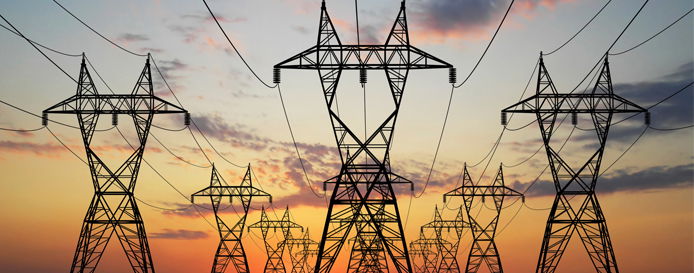Energy Procurement Service
To find out if we can improve on your current contract all we need to know are the following:
- Current usage for the past 24 months
- Current rates
- When your current contract is due to expire.
Contact us today.
What are the advantages of structured energy procurement?
Savings potential in energy procurement
Price developments in the energy market are complex and can only be predicted to a limited extent. Many companies, therefore, prefer to purchase energy at long-term fixed prices. But when energy requirements are very high, this leaves large potential savings untapped. Intelligent energy procurement enables you to optimize your energy purchasing and reduce costs.
The main advantage of structured procurement is therefore that you significantly reduce the risk of paying too high a fixed price. The risk of purchasing the entire quantity of energy at an unfavourable time is eliminated in the tranche model, as they are always based on market prices. The higher the number of tranches, the more effective the risk diversification. This aspect is particularly important for industry; after all, low energy costs are a clear competitive advantage.
An individual energy purchasing strategy is therefore of high business relevance for companies with high energy consumption. With our gas and electricity procurement models, we offer you professional and continuous coverage of your energy needs. You benefit from our many years of experience and our know-how of the existing market structure.

How energy procurement works
In contrast to the fixed-price model, which is based on key date procurement at a single point in time, the energy required is procured at several points in time in partial quantities - so-called tranches. In this way, different points in time and different trading centers are used to purchase energy in order to spread the risk and benefit from low price phases.
What are the energy procurement models for purchasing electricity?
Today, in addition to traditional fixed-price procurement, energy supply companies offer very different products with different characteristics. Given the wide range of procurement models, companies are faced with the question of which of these products is right for them when purchasing electricity. In the following, we have compiled the main types of procurement in electricity purchasing and explain the advantages and disadvantages of the individual procurement models.
Key date procurement/fixed price model
The term key date procurement or fixed price model refers to the purchase of the entire quantity of electricity required at a fixed price agreed on a key date. This means that the purchaser buys the entire quantity of energy for the full term of the contract at the price level that is current at the time of procurement. This procurement model is quite risky and non-transparent for the purchaser. Risky in particular, because the market price of a single day is used for the procurement of the electricity requirement for several years if necessary, intransparent in so far as the buyer cannot understand the calculation of the energy delivery price, the contribution margin of the supplier as well as the risks priced in by the supplier with the energy purchase. If the amount of electricity must be re-procured at the end of the contract term, the purchaser faces the same market price risk as before.
Despite these obvious disadvantages, the fixed-price model also has advantages. In particular, the low use of resources and the calculator planning security during the term are the decisive arguments for many companies in favor of this electricity procurement model. In principle, key date procurement can be an option for small to medium purchase volumes or for companies with a lack of personnel resources/know-how and a low dependency on energy costs. In any case, a price comparison is recommended to minimize the risk of rising energy costs.
Advantages of the fixed-price model
- Price/budget security (price commitment over several years)
- No control energy risk
- Hardly any administrative effort
Disadvantages fixed price model
- high price risk, because price/costs often depend on arbitrary purchase date
- little potential for savings, as the cut-off date offers differ only in the amount of the supplier surcharges
- non-transparent costs
- little/no flexibility, as no profit is made from falling market prices after conclusion of the contract
- no build-up of know-how in own company
You are not yet sure whether structured procurement or purchasing on the due date is the better choice for you? Or do you have specific questions that you would like to ask an expert?
Portfolio management for energy procurement
Portfolio management is the most complex and flexible form of electricity procurement. In contrast to the procurement methods described above, the defined volumes are priced on the wholesale market. Since exchange admission and a trader's license are required for trading, a commissioned energy trader handles the transaction. The essential feature of portfolio management is the breakdown of a customer's (aggregate) load profile into listed standardised trading products that are traded individually. This procurement method is particularly suitable for energy-intensive customers with a uniform and easily predictable consumption structure. The key is to put together a suitable product mix to reduce procurement costs despite market price, volume and structure risk. Portfolio management requires not only a clear procurement strategy but also sufficient human resources to build up the necessary know-how and handle the processes within the company.
Advantages of portfolio management
- transparent costs (energy price components are decomposed)
- easy to plan and flexible (depending on the long-term nature of the products)
- energy purchasing in the company is professionalized
Disadvantages of portfolio management
- high own personnel expenditure
- Requires extensive know-howRequires a changed organisational structure
- assumption of risks
- high effort for price controlling
- additional costs/investments have to be compensated by savings